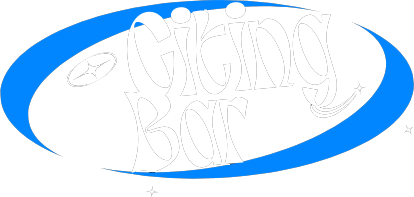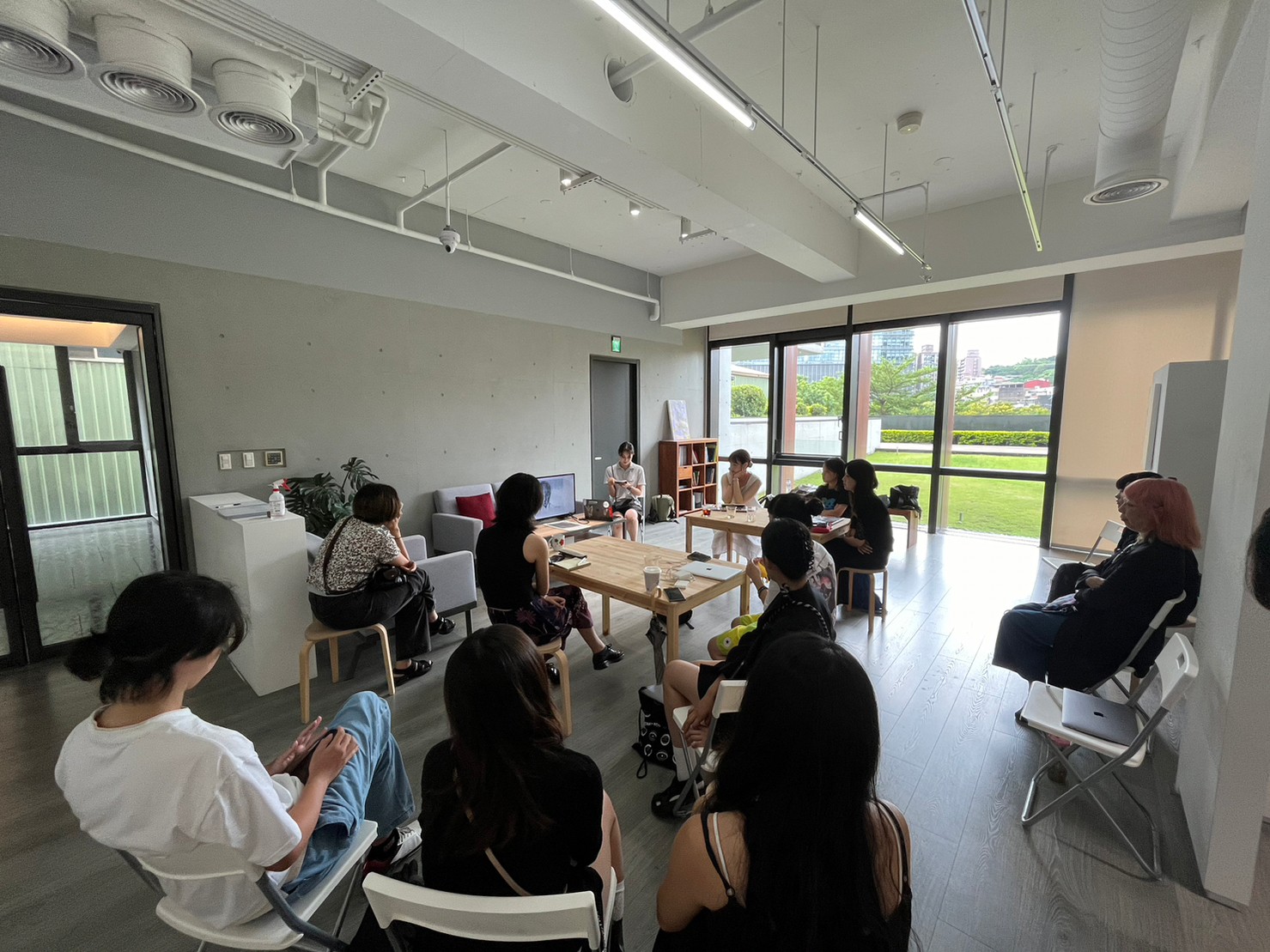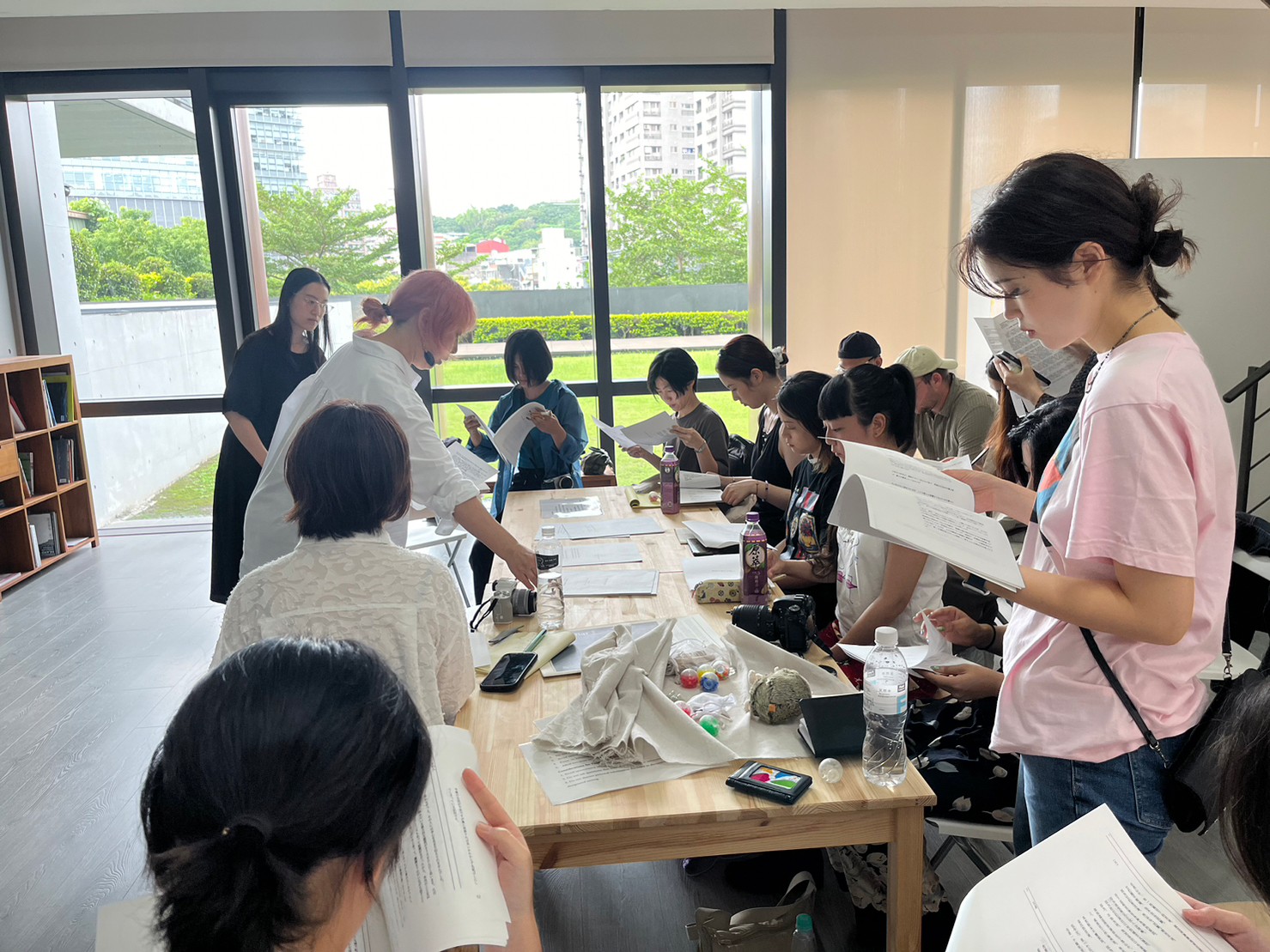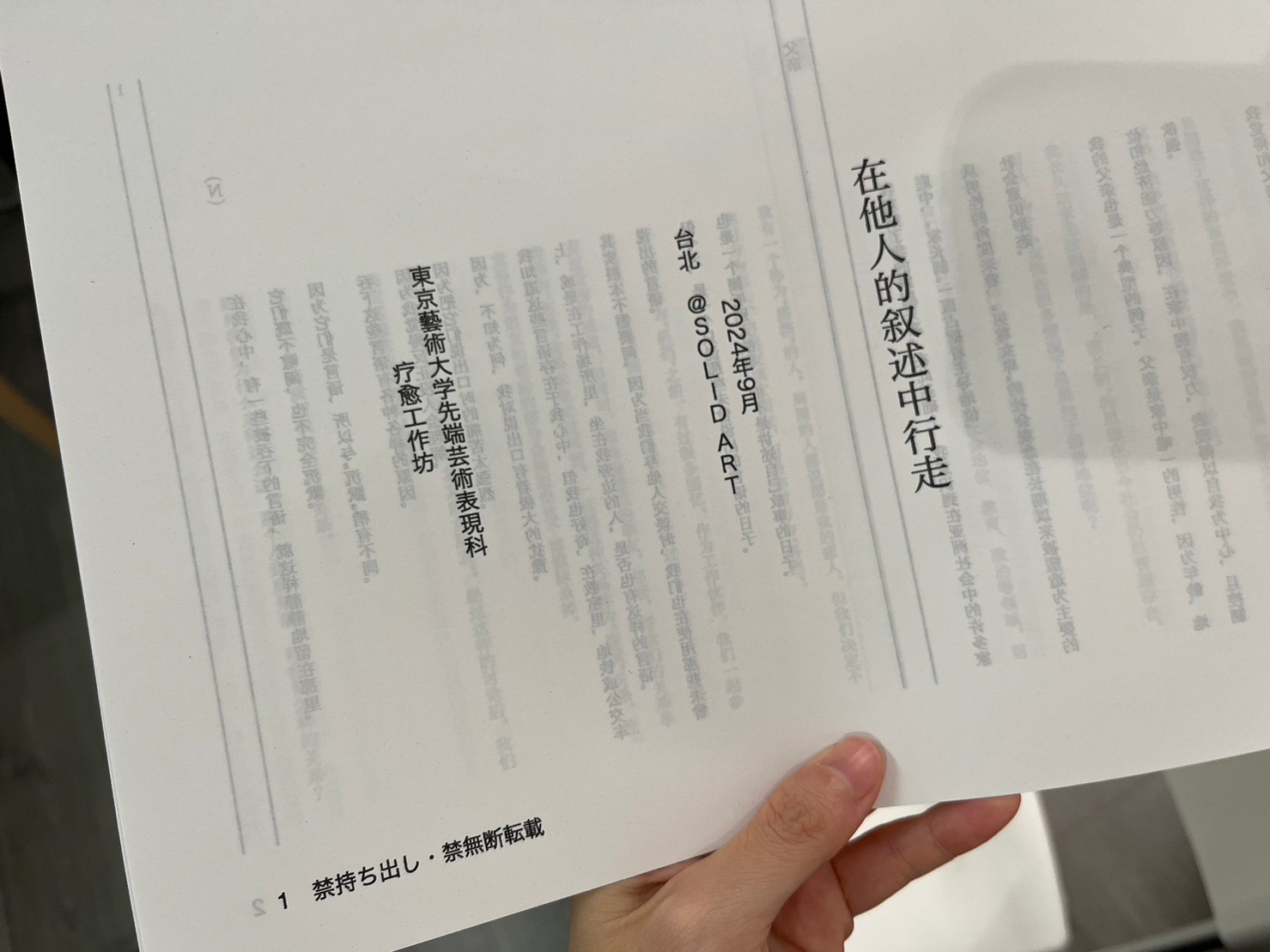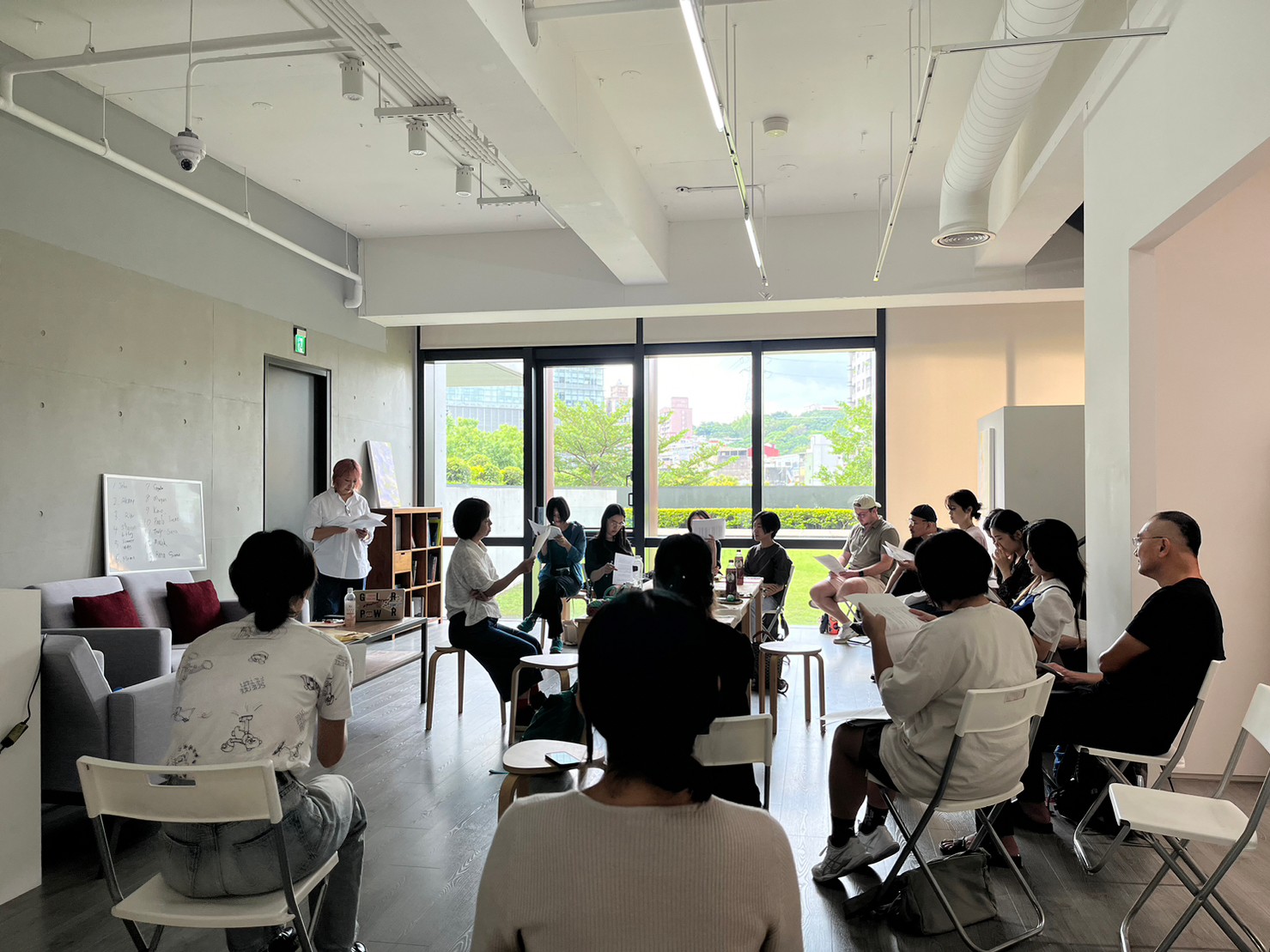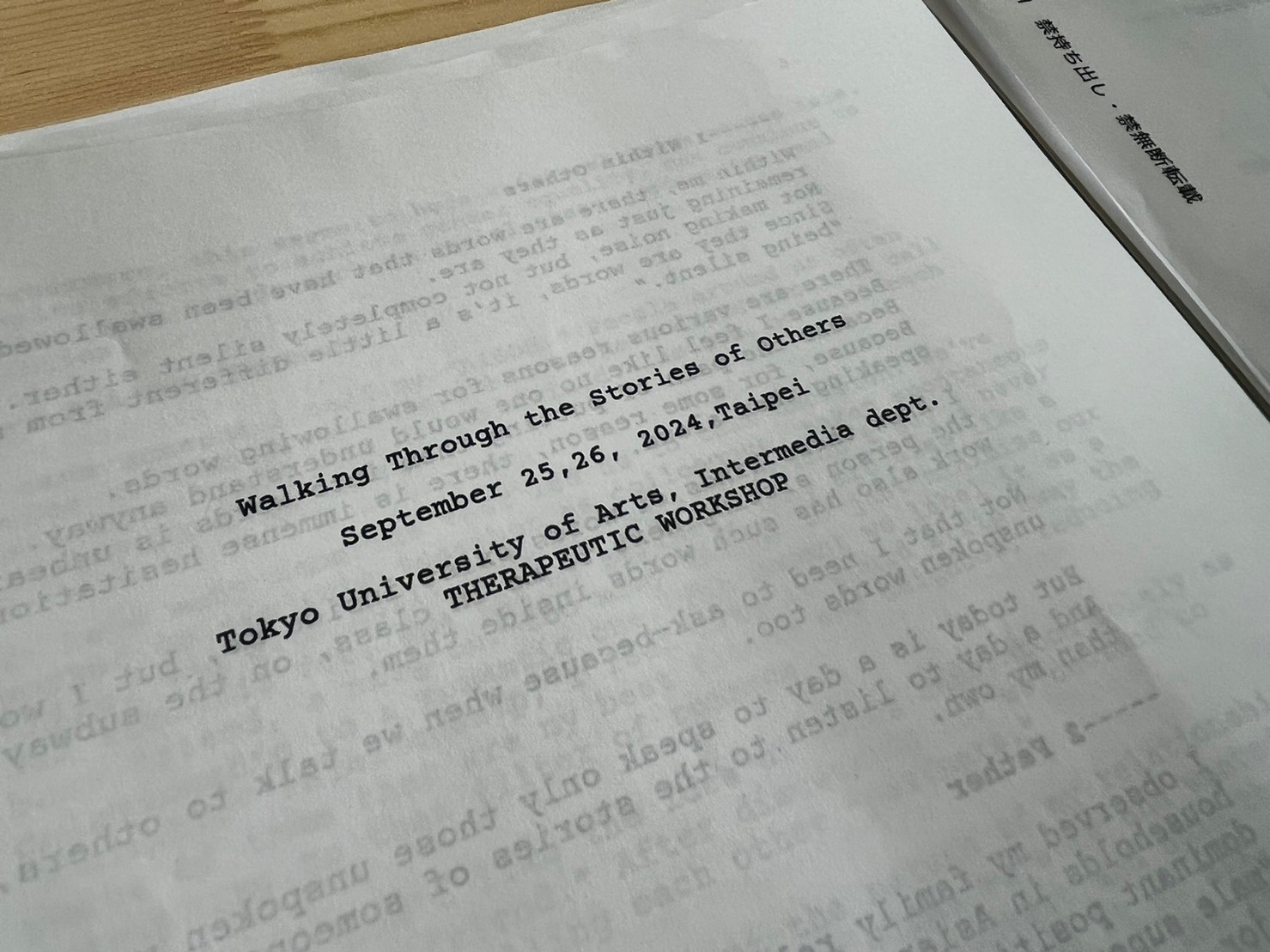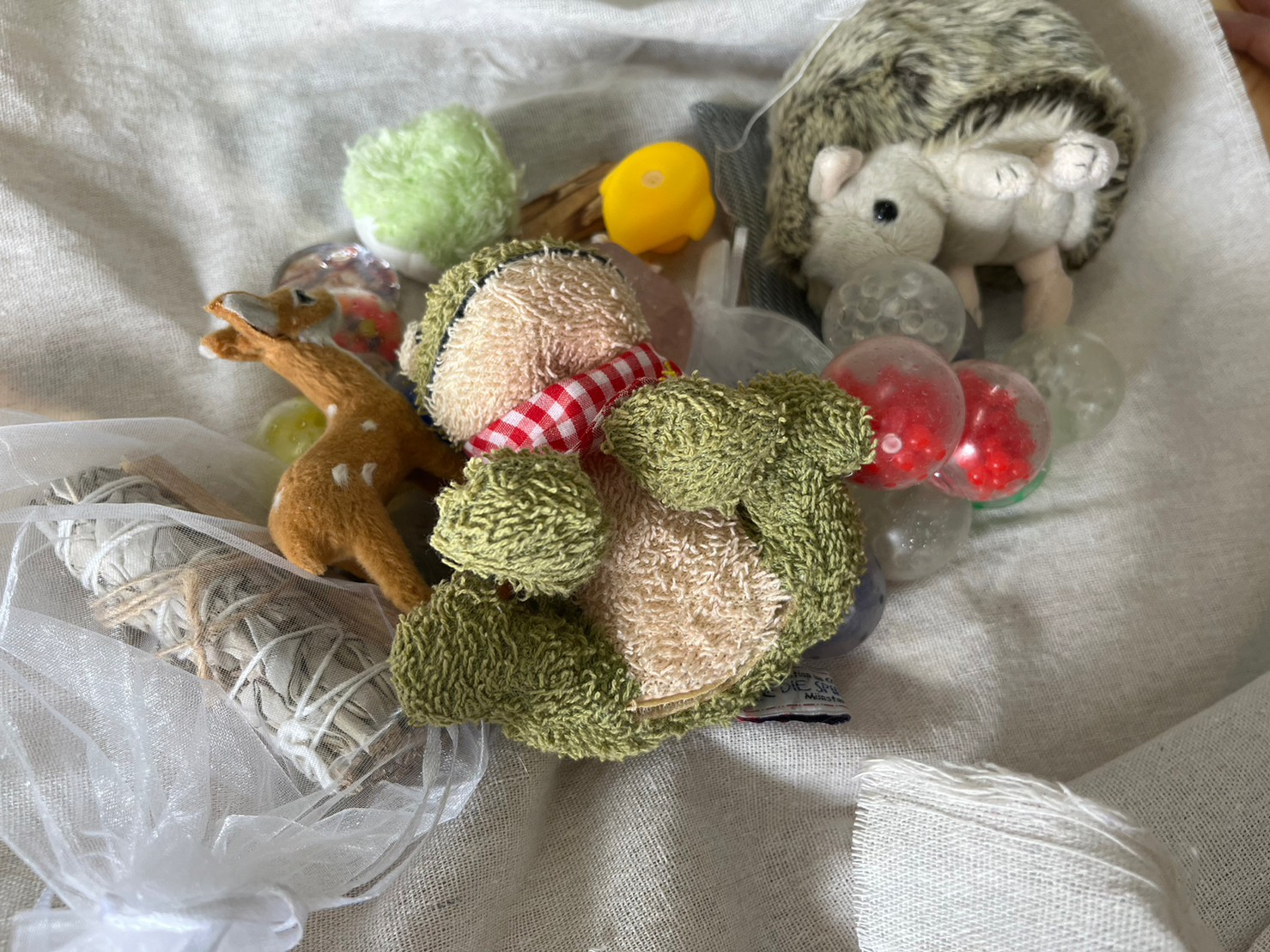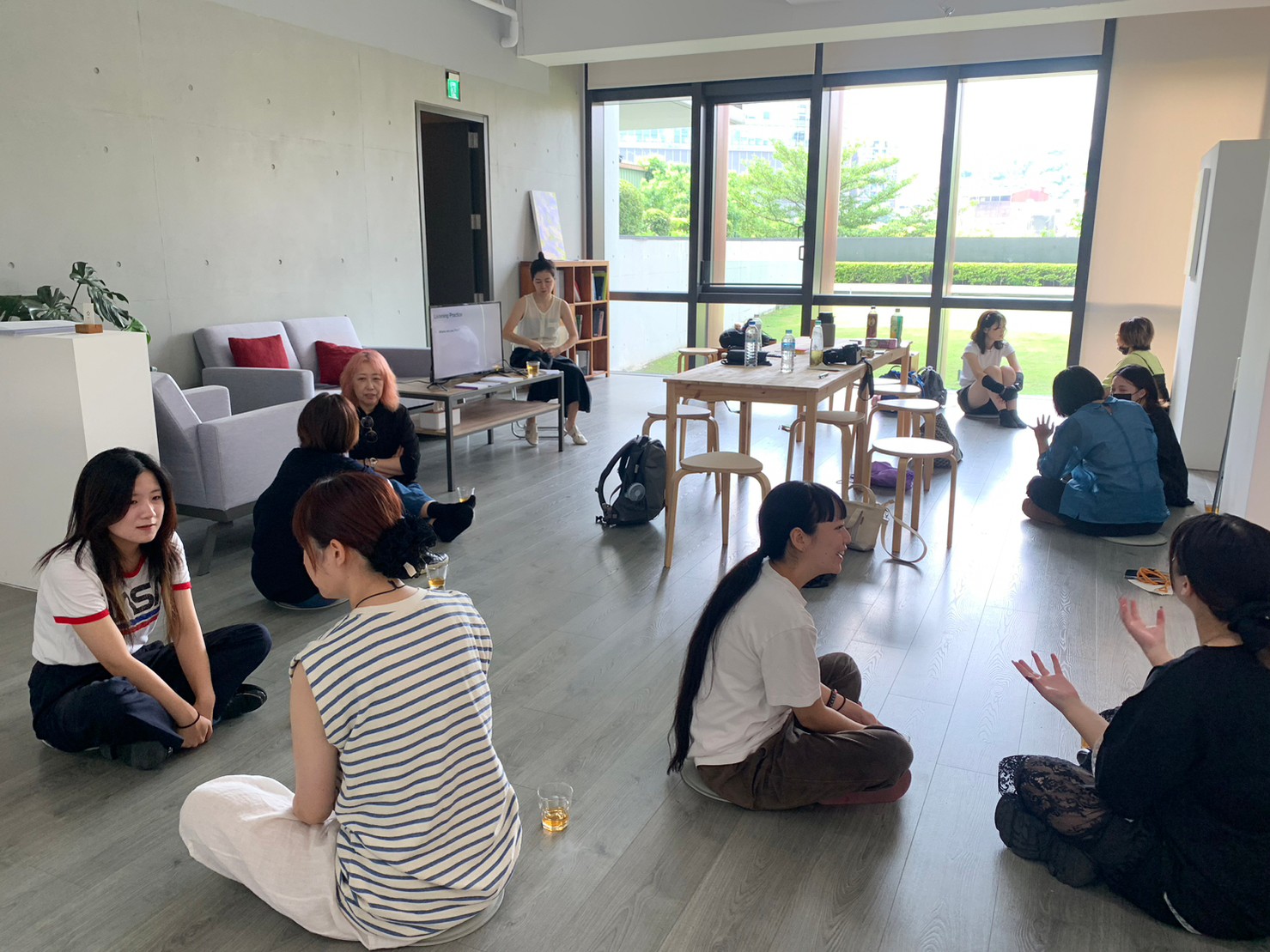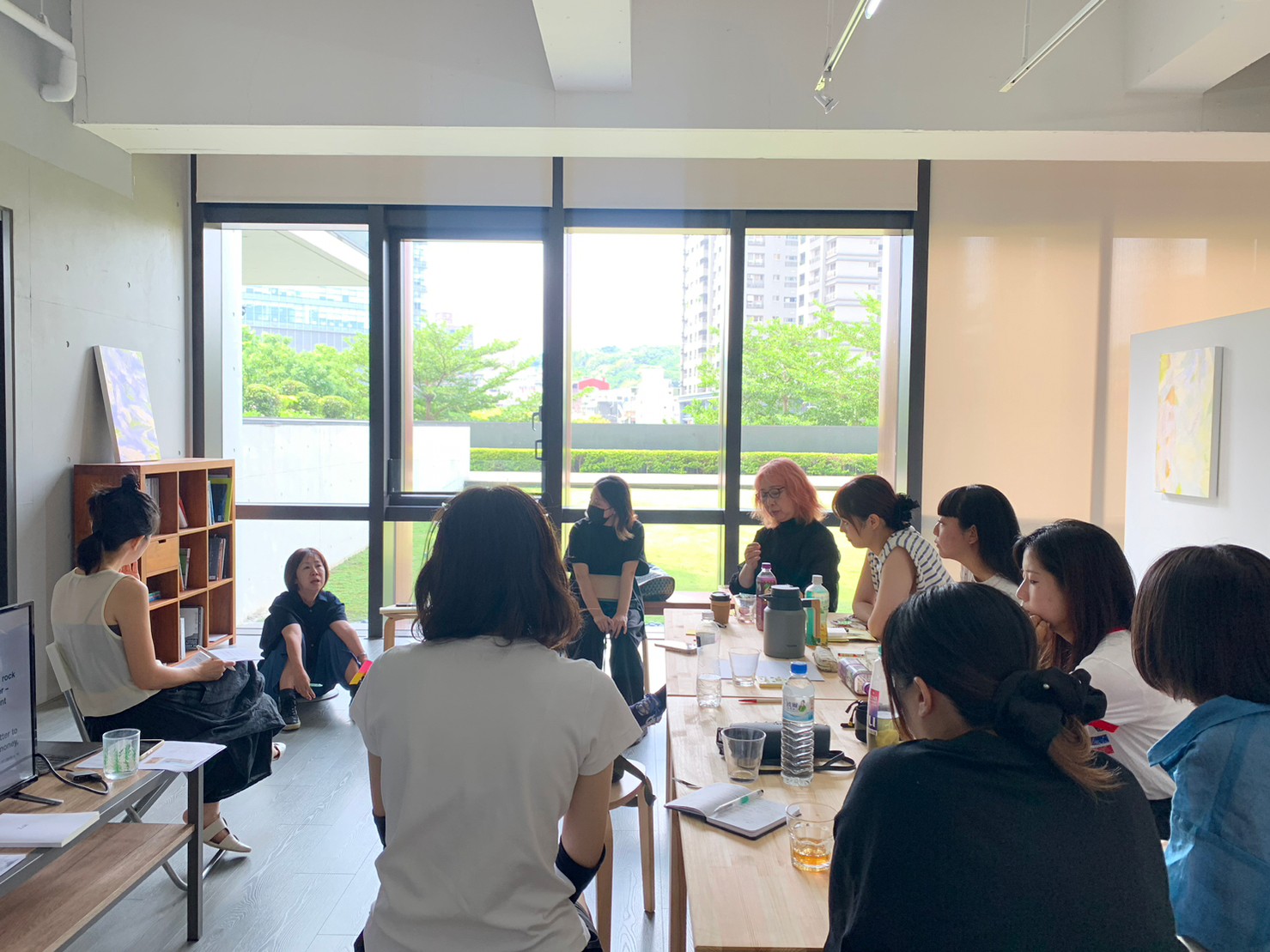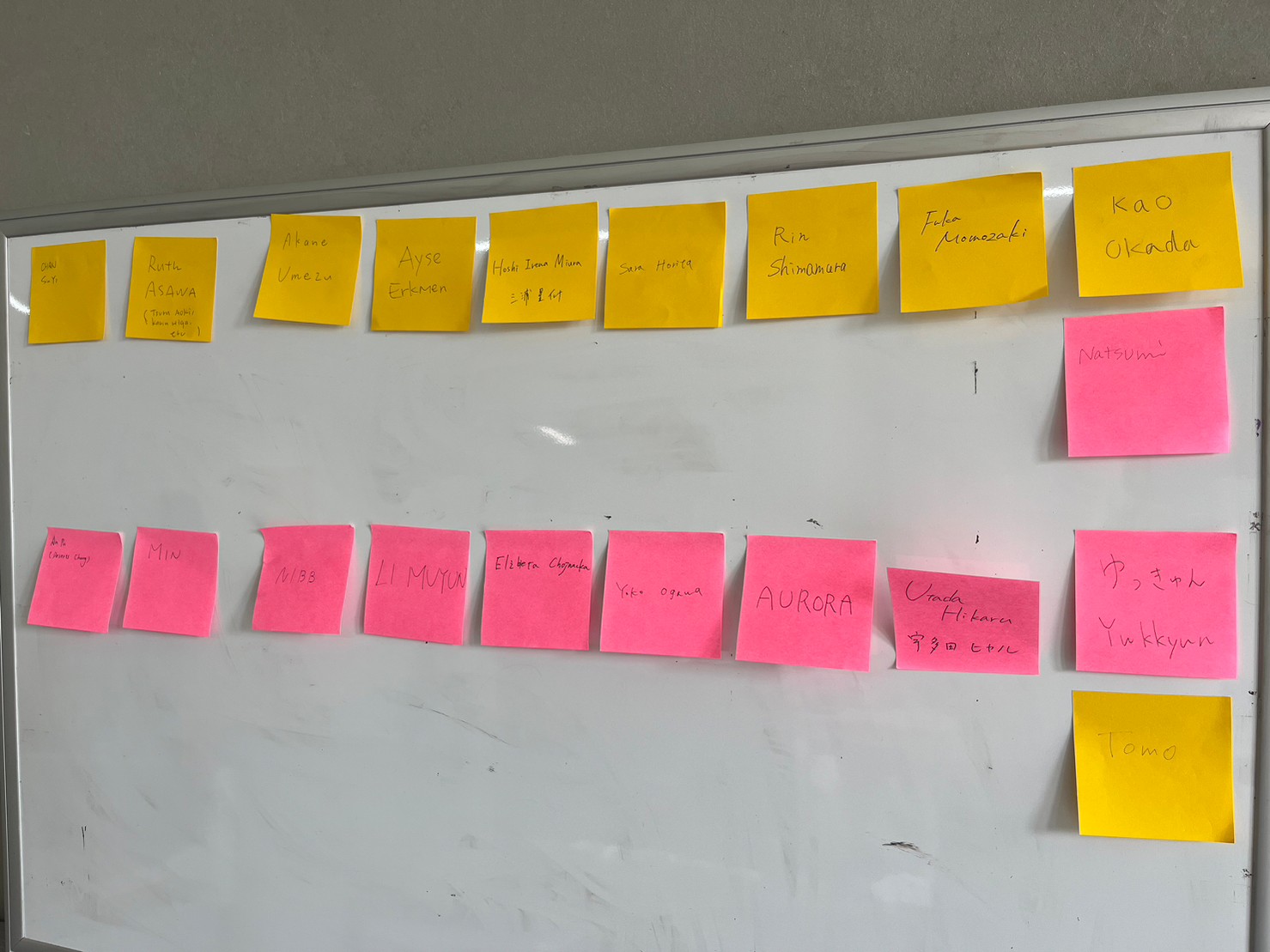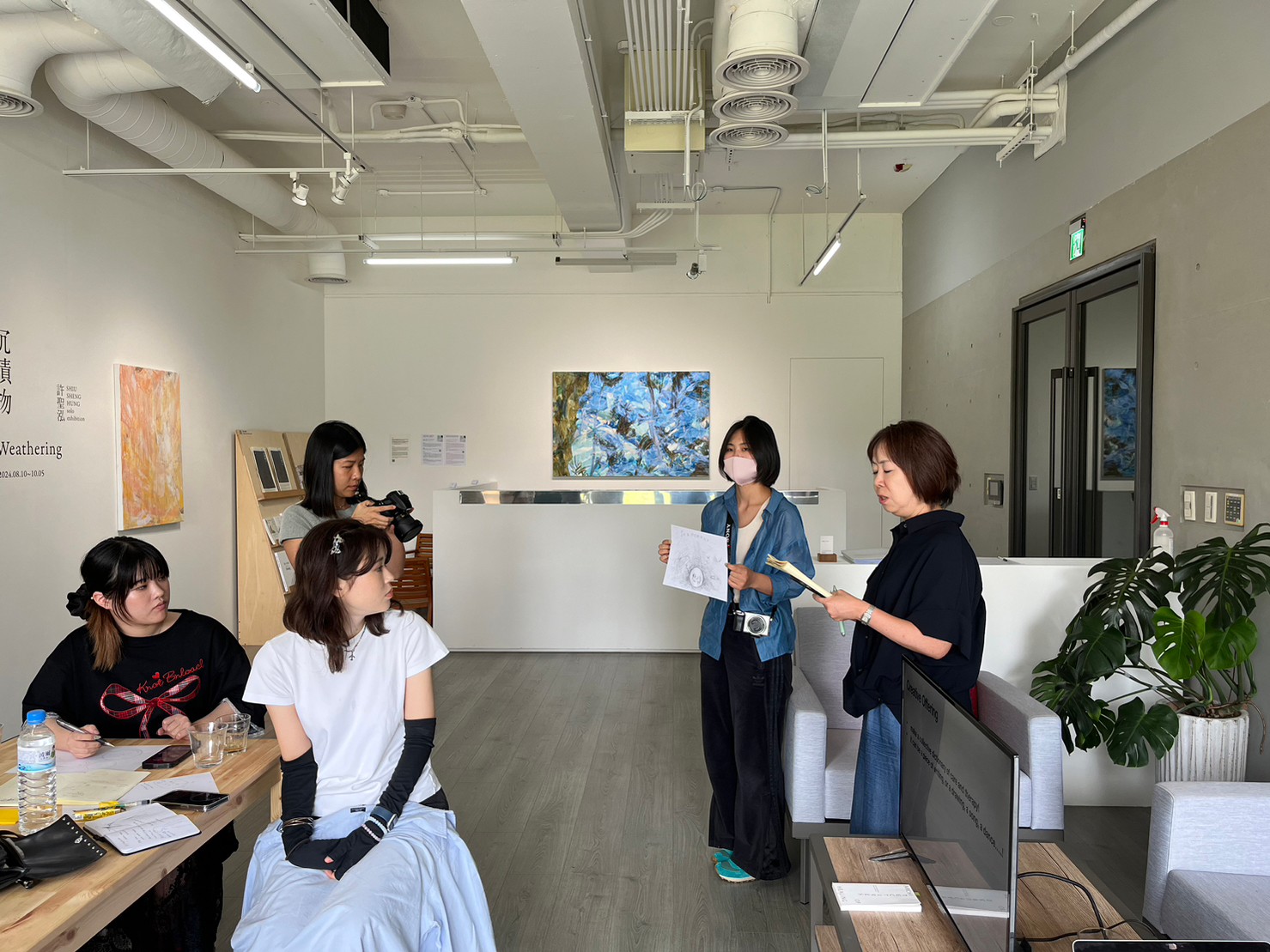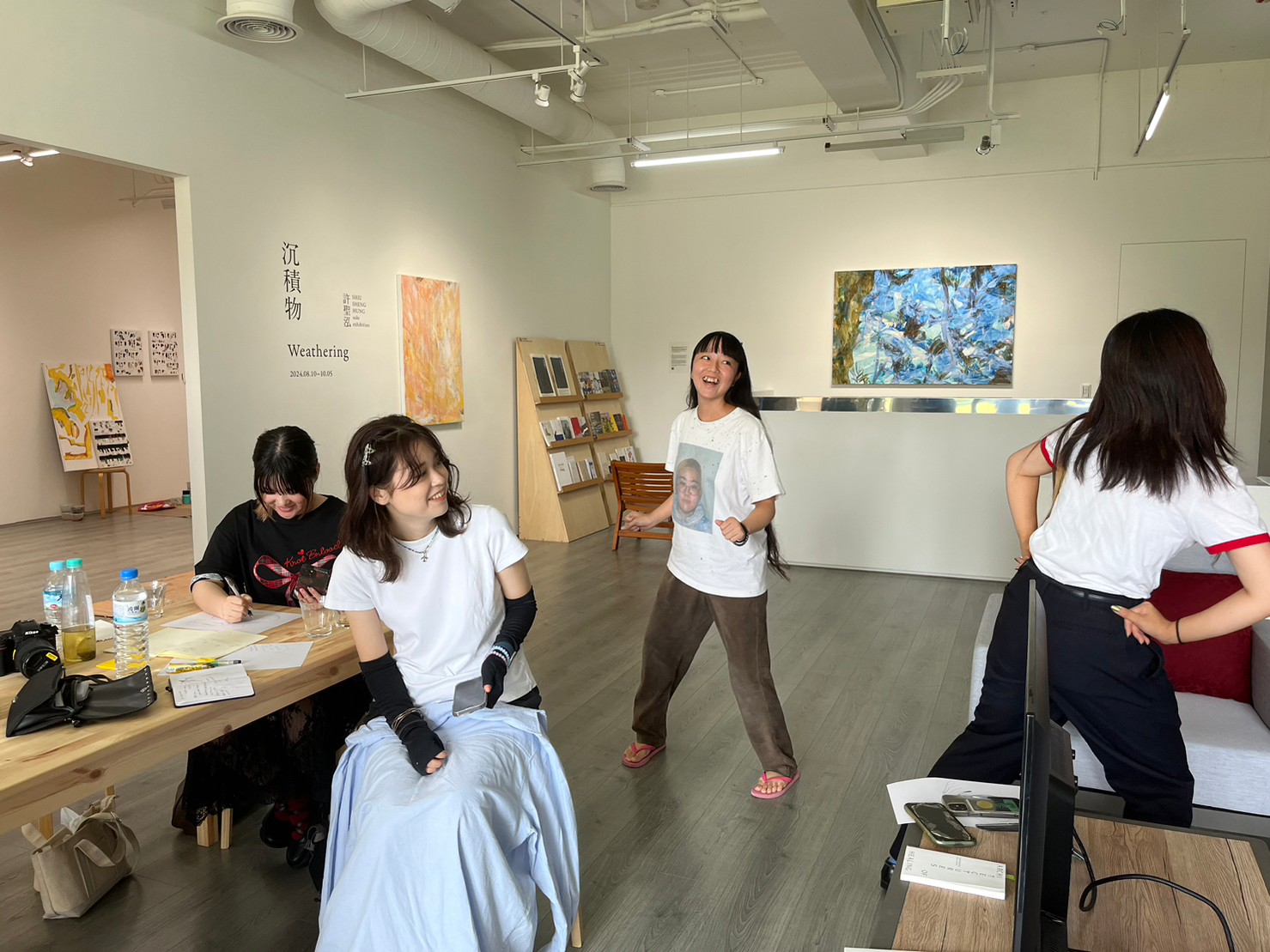When We Are Together, Healing Becomes Possible
One of the core issues of contemporary art is how it connects with real society. In recent years, there has been a growing interest in how art contributes to well-being, such as promoting mental health. This project, initiated by Tokyo University of the Arts and curators Natsumi Araki and Min Nishihara, invites “citing bar” to collaborate with Solid Art in a workshop format to explore the relationship between art, caring, and healing.
Inspired by the pandemic and numerous environmental and geopolitical crises, I have delved into feminist environmental humanities. In 2022, I curated Tides in the Body, a project that connected internal chaos and external crises through water, probing how acknowledging both sources and dilemmas can empower one another, breaking boundaries to form a collective resilience through language and action. The exhibition touched upon the “politics of citation,” which further inspired the creation of citing bar. Starting in 2023, this initiative has fostered cross-disciplinary and cross-cultural collaborations, offering exhibitions, discussions, screenings, writing, reports, and publications to expand various knowledge forms, ecological wisdom, and worldviews, with the hope of practicing care and justice in a world beset by crises and conflicts.
Last year, during a field research trip on ecofeminism in Asia, I was deeply impressed by the sensitivity I observed in exhibitions and artists I visited in Japan. Beneath this seemingly calm society lies unlit spaces of oppression, and these gaps are where creativity springs. I felt the same social sensitivity and empathy from the presentation by the students on the first day, prompting me to ponder what kind of era and world we inhabit and how art can help us find our voice—not just to define our place but to create a collective space for holding the as-yet unvoiced cries for justice and the wounds still awaiting warmth.
The two-day workshop led by Min provided profound inspiration for creating such spaces. While reading the script that had been pre-collected, arranged, and translated, I was struck by the unreserved honesty of those “unspeakable” experiences. These words held tremendous power, built on trust and sharing. When we offer a story, we create a space where resonance can happen. Most do not realize that by simply doing so, a possibility for healing begins. These spaces gain further vitality through each other’s voices, blending in shared time and space. Boundaries dissolve, creating an expansive, resilient space filled with collective mourning and blessings.
In the workshop I led the next day, on a sunny morning, we began with a meditation and a ritual of drinking, then attuned our senses to the environment and to each other. The exercise of “citation” led us to create an inspiring list of listens/reads/reflections, including four musicians, four artists, a writer, two former classmates, and one grandmother. The most challenging practice was recreating the ancient Greek healing temple Asklepieion. It was my first time guiding this exercise, but with the foundation of trust built in Min’s workshop, everything unfolded smoothly. In the final offering session, each group shared creative daily healing prescriptions from their experiences. This resonant experience nourished me to continue exploring how to define “we” in a world of constant conflict and oppression and to understand what care and sustaining wisdom are needed to heal our future.
I heard that everyone later got caught in a downpour in Jiufen. I hope that rain made our shared memories of self-healing and connection even more vivid. I will always keep close the invaluable insight gained from reading those intimate experiences—that maybe voicing ourselves doesn’t always require sounds— like in Mutant Message Down Under, the indigenous Australian tribes were said to be able to communicate across time and space, and I believe art can be a way of voicing, helping us realize and expand spaces that resist oppression and are free, joyful, and full of love.
